Two Chinese People’s Liberation Army (PLA) aircraft carriers, the Liaoning and the Shandong, have carried out operations in the western Pacific simultaneously for the first time, also marking the first time Chinese carriers have crossed the second island chain, a national security official said yesterday.
The move signals China’s ability to demonstrate control, establish a strategic presence, and block maritime and air traffic across the island chains to pressure all parties in the region, they said.
On June 7, the Japanese Ministry of Defense reported a sighting of the Liaoning in the waters near Minamitorishima, the Pacific island marking Japan’s easternmost territory.
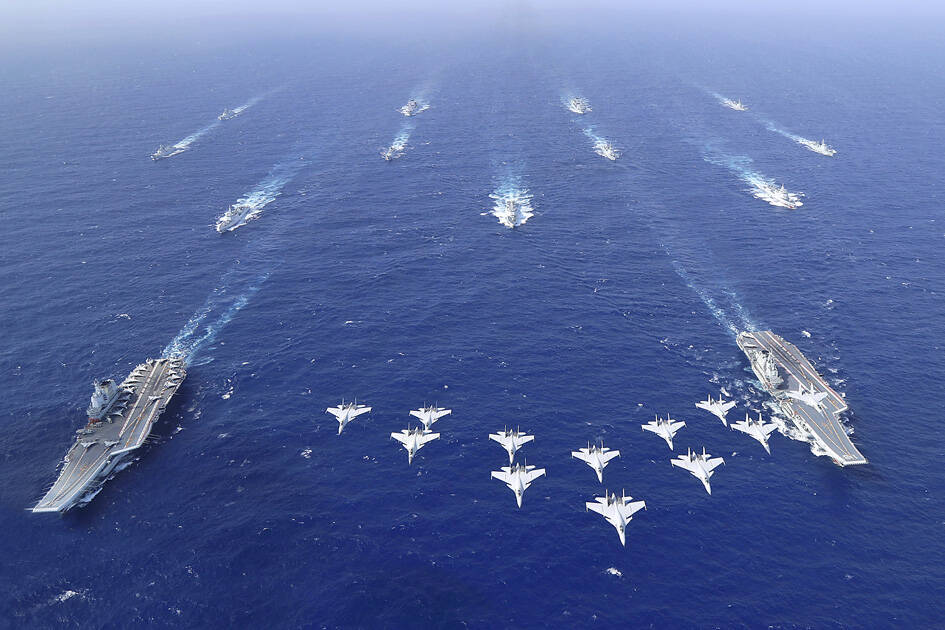
Photo: AP
Two days later, the Shandong was spotted north of Okinotorishima, Japan’s southernmost island, entering Japan’s exclusive economic zone (EEZ).
Since May 19, the two carriers have been exerting pressure across the island chains, with each carrier fleet progressively joined by more warships and supply vessels, officials said.
The Liaoning has been conducting military exercises in the Yellow Sea and the East China Sea, including aircraft takeoff and landing drills, maritime patrols, tailing and monitoring activities, and simulated attacks on foreign aircraft and ships, they said.

Graphic by Taipei Times
On June 6 and 7, Japan protested after a PLA aircraft came dangerously close to a Japanese anti-submarine aircraft, they added.
Meanwhile, the Shandong carrier group carried out military drills from the northeast of the Philippines to the southwestern islands of Japan, before returning to its home port via the Philippines’ Balintang Channel and the South China Sea, they said.
The scope of these deployments and exercises far exceed anti-access/area denial operations or homeland defense, officials said, adding that it signals that the PLA wishes to expand its military presence and reach into the third island chain.
Beijing has sought to establish dominance following the Shangri-La Dialogue, which was held from May 30 to June 1, and the US, the EU and multiple nations have repeatedly warned of the increased threat from China’s expanding military presence in the Indo-Pacific region, they said.
The choice of location aims to force neighboring countries into reconsidering their policies toward China, including their security cooperation alliances, officials said.
Beijing strongly opposes any alliances between democratic nations, exemplified by its combat readiness patrols on June 19 and 20 in response to countries’ navy vessels conducting freedom of navigation operations in the Taiwan Strait on June 12 and 18, they said.
China’s retaliation included military intimidation involving more than 70 aircraft and strongly worded statements from the Chinese Ministry of National Defense, they added.
The PLA’s latest drills also coincide with heightened tension in the Middle East, showing that China is keen to project military power in the Indo-Pacific region to alleviate pressure on its allies, including Iran, the officials said.
South Korea has also recently expressed concern over large Chinese installations in the Yellow Sea, while Japan has protested Beijing’s constructions along the China-Japan maritime border in the East China Sea, they said.
China has recently accelerated its policies to treat the Yellow Sea, East China Sea, South China Sea and the Taiwan Strait as part of its own territory, which is only set to continue, officials said.
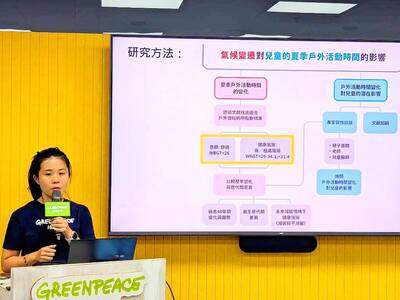
The government should improve children’s outdoor spaces and accelerate carbon reduction programs, as the risk of heat-related injury due to high summer temperatures rises each year, Greenpeace told a news conference yesterday. Greenpeace examined summer temperatures in Taipei, New Taipei City, Taoyuan, Hsinchu City, Taichung, Tainan and Kaohsiung to determine the effects of high temperatures and climate change on children’s outdoor activities, citing data garnered by China Medical University, which defines a wet-bulb globe temperature (WBGT) of 29°C or higher as posing the risk of heat-related injury. According to the Central Weather Administration, WBGT, commonly referred to as the heat index, estimates
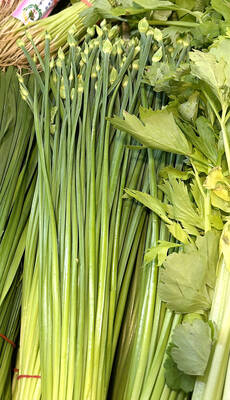
The Taipei Department of Health’s latest inspection of fresh fruit and vegetables sold in local markets revealed a 25 percent failure rate, with most contraventions involving excessive pesticide residues, while two durians were also found to contain heavy metal cadmium at levels exceeding safety limits. Health Food and Drug Division Director Lin Kuan-chen (林冠蓁) yesterday said the agency routinely conducts inspections of fresh produce sold at traditional markets, supermarkets, hypermarkets, retail outlets and restaurants, testing for pesticide residues and other harmful substances. In its most recent inspection, conducted in May, the department randomly collected 52 samples from various locations, with testing showing
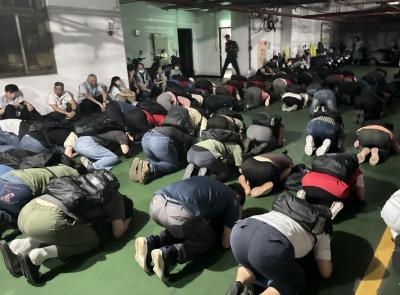
Taipei and other northern cities are to host air-raid drills from 1:30pm to 2pm tomorrow as part of urban resilience drills held alongside the Han Kuang exercises, Taiwan’s largest annual military exercises. Taipei, New Taipei City, Keelung, Taoyuan, Yilan County, Hsinchu City and Hsinchu County are to hold the annual Wanan air defense exercise tomorrow, following similar drills held in central and southern Taiwan yesterday and today respectively. The Taipei Mass Rapid Transit (MRT) and Maokong Gondola are to run as usual, although stations and passenger parking lots would have an “entry only, no exit” policy once air raid sirens sound, Taipei
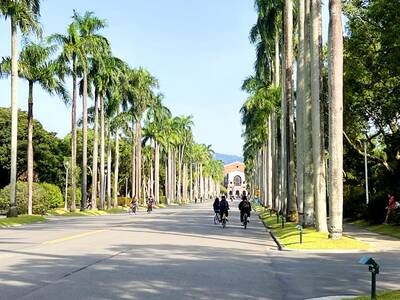
Taipei placed 14th in the Quacquarelli Symonds (QS) Best Student Cities 2026 list, its highest ever, according to results released yesterday. With an overall score of 89.1, the city climbed 12 places from the previous year, surpassing its previous best ranking of 17th in 2019. Taipei is “one of Asia’s leading higher-education hubs,” with strong employer activity scores and students “enjoying their experience of the city and often keen to stay after graduation,” a QS staff writer said. In addition to Taipei, Hsinchu (71st), Tainan (92nd), Taichung (113th) and Taoyuan (130th) also made QS’ list of the top 150 student cities. Hsinchu showed the